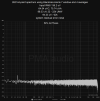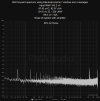IMD measurements of the PMA-NC252MP amplifier
I am rather interested in deep verification of the amplifiers than in a fast overview. To continue in this effort, I have decided to perform a set of intermodulation and multitone measurements. My relatively new system test combo, Topping D10s + E1DA Cosmos ADC, allow me to set quite accurate distortion measurements of power amplifiers.
The new images with plots are provided with quite detailed legend and are quite big, so this time I have decided to post thumbnails, so please click on the to see the full images. Both plots of the measuring system distortions and amplifier measurements are shown in some cases, to see where is the measurement limit.
Measurements of intermodulation distortions
Let me start with definitions, which I have borrowed from the REW manual, as the REW is the software used for the measurements. The definitions explain why you would see apparently different maximum power corners at the X-axis of the plots.
The CCIF (19+20kHz) figure is calculated from the level at f2 - f1 (also called the 2nd order Difference Frequency Distortion or DFD2). The 3rd order DFD3 figure based on the levels at 2*f1 - f2 (18 kHz) and 2*f2 - f1 (21 kHz) is also shown.
The reference level for the DFD figures is the sum of the level at f1 and the level at f2. An IMD pwr figure is also shown, which is the ratio of the rms sums of the IMD components to the rms sum of f1, f2 and the IMD components.
The TDFD IMD DFD is calculated from the rms sum of 2nd order and 3rd order components, the reference level for the percentage figure is the sum of the levels at f1 and f2. For TDFD Phono (3005+4662Hz) and TDFD akl (13586+19841Hz) d2L (f2 - f1) and d3L (2*f1 - f2) are used, for TDFD Bass (41+89Hz) d2H (f2 + f1) and d3H (2*f2 - f1) are used.
The AES17 DFD IMD (18+20kHz) figure is based on the levels at f2 - f1 (2 kHz), 2*f1 - f2 (16 kHz) and 2*f2 - f1 (22 kHz), the reference level for the IMD AES percentage figure is the level at f1 (18 kHz). In all cases levels are measured across a 500 Hz bandwidth centered on the component being measured, per the AES17-2015 specification. DFD2 and DFD3 are also shown.
In all cases REW also shows a total distortion + noise percentage,
TD+N. This figure is the square root of the ratio of the noise and distortion powers to the power of the tones.
Let's start with the CCIF IMD (19+20kHz)
Measuring system CCIF IMD; Amplifier CCIF IMD at 17.6V/4ohm
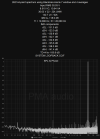

IMD = -118dB, TD+N = -105.8dB; IMD = -85.8dB, TD+N = -99.9dB
CCIF IMD distortion vs. output power
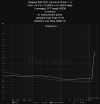 Now the TDFD akl IMD (13586+19841Hz)
Now the TDFD akl IMD (13586+19841Hz)
Measuring system TDFD IMD; Amplifier TDFD IMD at 17.91V/4ohm
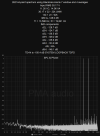
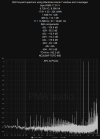
IMD = -128dB, TD+N = -105.4dB; IMD = -112.1dB, TD+N = -100.2dB
Now AES17 (18+20kHz) distortion vs. power. Please remember that in this case the power is referred only to the 18kHz component, by definition.
 Multitone measurements
Multitone measurements (please note that the LF spectrum resolution is related to the window used)
Measuring system multitone; Amplifier multitone


TD+N = -96.9dB; TD+N = -86.2dB
The last set shows the
residual system noise error and the system+amplifier noise. The residual system nosise is measured in the complete loop, but the input wires of the measuring cable are shorted and connected to the amplifier output Lo terminal (= Com speaker terminal)
System residual error noise; Amplifier output noise, in the system used
